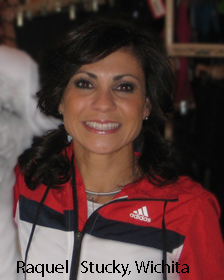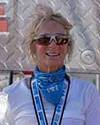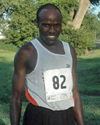The State of the State’s Running, 2018
In 2018 the 5K was again the most commonly run distance with 53 races for which we found results that were held on courses certified by USA Track & Field.
After the 5K, the most popular distance was the 10K with 19 races followed by the half-marathon with 17 and the marathon with eight. The Hiawatha Hustle 12K, new in 2017, wasn’t held in 2018, leaving the Wichita Run as the state’s only 12K. The only 15K, the Goddard Tiger Trot, wasn’t held in 2018 for the second consecutive year, and the 811 8K in Wichita remained the state’s only race at that distance. There were only two 10-mile races, Lake Atwood (the state’s oldest race, now in its 46th year), and the Wichita Turkey Trot, which has a 30-year tradition.
We regret the continued decline in the number of races at the less commonly run standard distances. We are aware that many newcomers to the sport may not be aware of these traditional events, most of which have national championship races sponsored by USATF. We encourage race directors to combine a race at one of these distances – 8K, 12K, 15K, 10 miles, 25K -- along with the usual 5K. (Better yet, replace the 5K with a one-mile, two-mile, or four-mile race.) The less commonly run distances provide runners a better opportunity to qualify for the state records list as well as a different racing experience from just another 5K.
The Urban ICT run in Wichita, new in 2018, shows the possibilities for innovation. This event has races at 5K, 10K, 25K, 50K, and 50 miles, all certified, on one out-and-back course. Most out-and-back courses lend themselves to a longer race and a shorter race, run separately or together thanks to modern timing technology.
One of the state’s most historic events, the River Run two-mile, is apparently being dropped for 2019 in favor of “just another 5K.” As noted above, there is no shortage of 5Ks. Seven of the top 13 men’s two-mile times and five of the top 11 women’s times were set at the River Run since its inception in 1987 along with several age-group records and many other Honor Roll performances. This leaves only three remaining two-mile races.
In 2018, there were 81 separate running events held on certified courses with a total of 124 races. Twenty-five races at various distances either were discontinued or did not provide results in 2018.
By city, Wichita once again led the way with 27 events held on certified courses compared with 15 in suburban Kansas City (Kansas side), six in Topeka, and five in Manhattan. No other city had as many as five. Congratulations to Ben Sigle and crew in Manhattan and Trevor Darmstetter and company in Wichita for continuing to establish new races on newly certified courses.
RECORDS UPDATE
For 2019, we have reviewed, and in many cases revised, age-group standards for the 5K, 10K, half-marathon, and marathon, the most commonly run distances. Many of the standards were established in the 1980s when relatively few women and older runners were competing.
The revised standards are noted by the words “2019 REVISION” at the top of the age-group results lists.
Our standards are based on the age-grading formulas set by World Masters Athletics, which are based on world-best times for each age group. Unfortunately, many runners who previously qualified no longer meet the current standards. We have tried to continue to recognize as many Kansas runners as possible with a “Kansas Additions” category in some distances and age groups, which includes in-state runners who met the previous standards.
The more-rigorous standards reflect the continued growth in highly competitive women and older runners and the focus on races at the 5K, 10K, half-marathon, and marathon distances. Generally, races at other distances may provide a better opportunity for runners to qualify for the state Honor Roll.
Thanks to the big growth in participation in certified races at ultramarathon distances in Kansas, we have also established standards for some ultradistance events, particularly in the open division. We congratulate Trevor Darmstetter for taking the lead in certifying ultradistance events. There are very few such races in the entire country, and Kansas has four events with 11 different races. The KUS 6/12/24-hour race, which was previously held on a certified course, was moved to a different location in 2018.
 So far as we are aware, Kansas has the most comprehensive road-race records of any state in the country. Our thanks go to Millard “Jack” Crook, who began our comprehensive records lists and established the original standards in the 1980s along with Clark Ensz. Jack celebrated his 90th birthday in June.
So far as we are aware, Kansas has the most comprehensive road-race records of any state in the country. Our thanks go to Millard “Jack” Crook, who began our comprehensive records lists and established the original standards in the 1980s along with Clark Ensz. Jack celebrated his 90th birthday in June.
We continue to encourage runners to seek out races held on certified courses. Experienced race directors will usually note course certification as part of the race information along with the certification number provided by USA Track & Field. Course certification is often an indication that the race director is more likely to have taken runners’ needs and interests into consideration.
We ask race directors to provide hometowns and exact ages for all runners in order to recognize state honor roll qualifiers. We also encourage race directors who are not themselves experienced runners to seek assistance from local running clubs when planning events.
Dick Lipsey, Steve Riley, & Gene Wee







 So far as we are aware, Kansas has the most comprehensive road-race records of any state in the country. Our thanks go to Millard “Jack” Crook, who began our comprehensive records lists and established the original standards in the 1980s along with Clark Ensz. Jack celebrated his 90th birthday in June.
So far as we are aware, Kansas has the most comprehensive road-race records of any state in the country. Our thanks go to Millard “Jack” Crook, who began our comprehensive records lists and established the original standards in the 1980s along with Clark Ensz. Jack celebrated his 90th birthday in June.